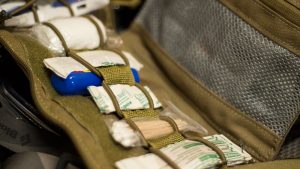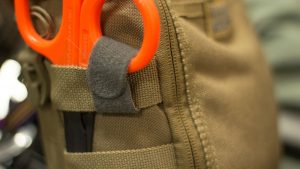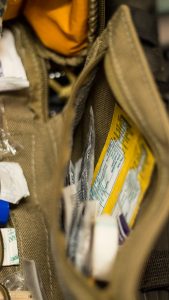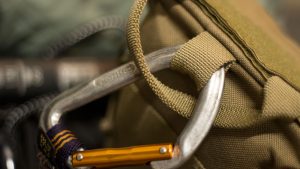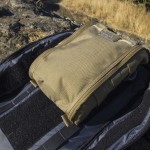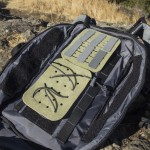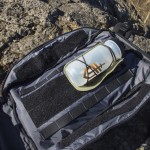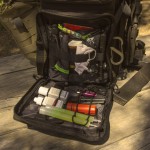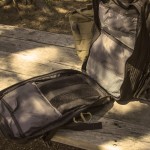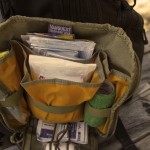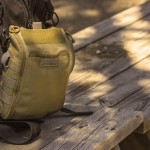There are some pieces of gear that you stay impressed with even after having it for a while. It still surprises you, and still performs as advertised even after picking up a bit of range time and breaking in. When I first received the Vanquest FATPack 7×10 medical pouch, I was impressed with its organization features, but I wasn’t sure how well it would hold up since it was my first “tactical” pouch of any kind.
This pouch has held up well over the last year as part of my SAR kit (search and rescue). In my last review, I recommended securing the pouch shut with a carabiner to prevent the pull handle from snagging on anything if stored inside a pack. I’ve used an old quick draw to keep it closed and which also serves as a way to attach it to my harness if needed.
The Cordura construction has kept up nicely and hasn’t shown any signs of wearing or tearing after many months of being yanked in and out of my pack. The Velcro tabs on the exterior hold a pair of Milspec Monkey medical shears.
The pouch still can’t be beat when it comes to organization, even with new products coming to the market. The outside pouch holds several pairs of gloves so those are the first things I have access to when using the kit. The interior pockets hold a SAM splint, gauze, water for wound irrigation and other bulky items. The shock cord ladder on the opposite side carries a variety of bandages and smaller items. The small zippered pouch, which sets this pouch apart from many others on the market, is perfect for holding medications. The durability and organization of the FATPack alone make it an impressive piece of gear, but the form factor is also a plus. The thing looks great. My teammates, even senior members, think it’s a cool medical pouch.
Even though it’s a great and dare I say impressive medical pouch, Vanquest has found ways to update the design. The second generation of the FATPack 7×10 carries a redesigned shock cord ladder on the front flap, internal elastic loops for holding smaller items such as pens and chemlights and a low profile MOLLE panel on the front for added real estate for patches or a small pouch. The second generation of pouches comes with a red tab for identification as a first-aid kit. The main thing that intrigues me about the second generation is the redesigned shock cord ladder. It appears that it will still be able to hold small items, but also accommodate larger bandages when being used as a larger trauma or blowout kit. I still would like to see an option for all-red construction for the non-tactical market, but the addition of the identification tab does improve visibility in low-light situations.
In short, the FATPack 7×10 is still my top pick when it comes to a pouch that can fit both tactical and wilderness medical gear needs. I have yet to see a pouch that can match its capabilities. Purchase the FATPack from Vanquest for $43.

